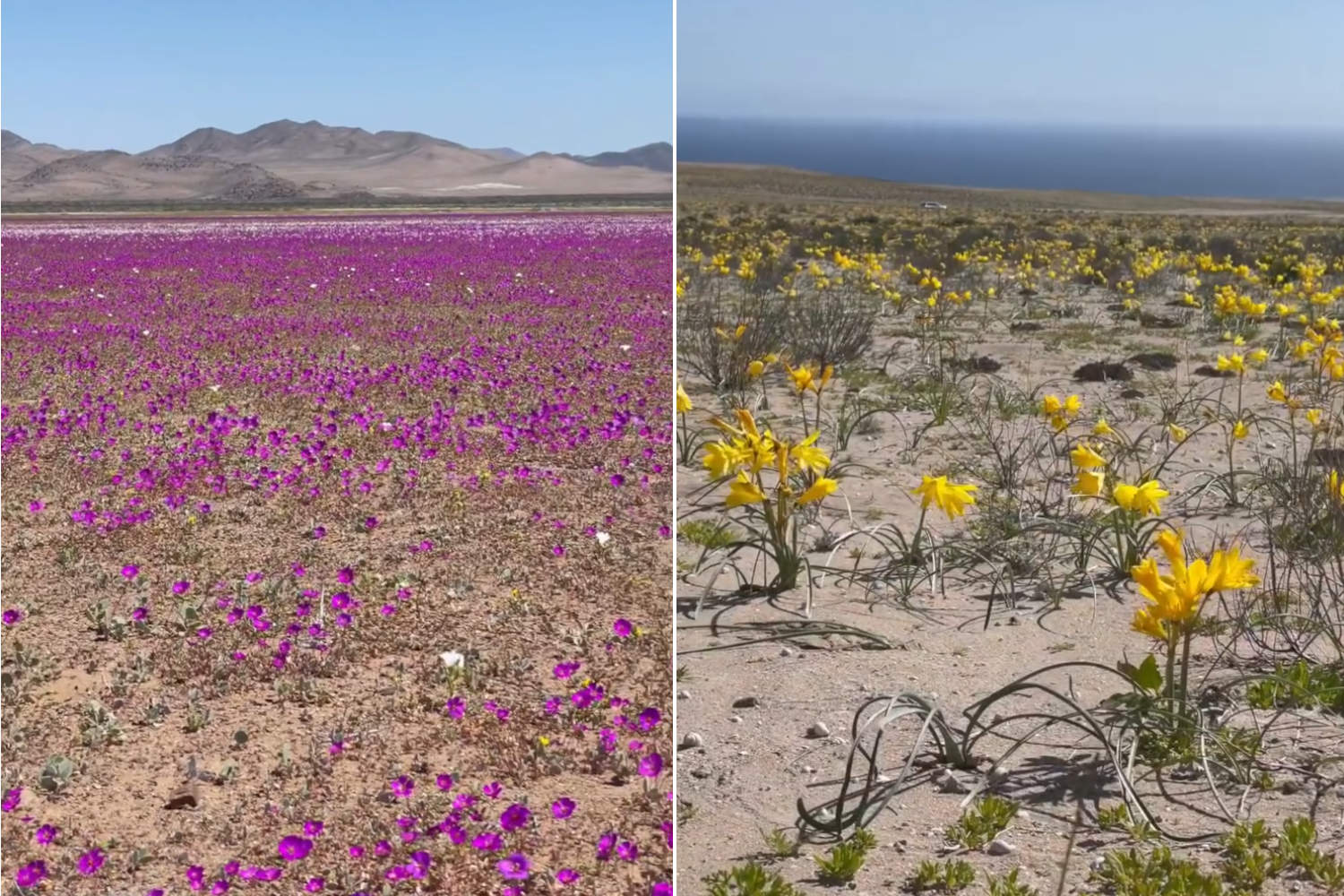The Atacama Desert, known for its rare blooms, also faces the environmental toll of fast fashion, with massive textile waste poisoning the land. A striking contrast between beauty and degradation.

@cristobalenruta/Instagram
The Atacama Desert, known as the driest place on Earth, has recently witnessed a rare and spectacular phenomenon: the appearance of thousands of wildflowers following unexpected rainfalls. This event, which doesn’t occur every year, attracts tourists and researchers from around the globe, eager to witness a transformation that is as fleeting as it is stunning.
A burst of biodiversity
When rains finally reach the barren expanse of northern Chile, the desert comes to life with over 200 documented plant species. These flowers remain visible for just a few weeks before retreating into dormancy, waiting for the next rainfall to spark their return. This phenomenon, known as the Desierto Florido (Flowering Desert), is considered one of the most extraordinary natural events in South America. Yet, it simultaneously highlights the fragility of the environmental balance in one of the most inhospitable regions on the planet.
Parks such as Llanos de Challe become popular destinations for families, travelers, and photographers, all eager to wander through trails bathed in colorful blooms. For researchers, it is also a unique opportunity. The CONAF (National Forest Corporation) team monitors the soil and vegetation, studying how biodiversity reacts to climate variations. The flowering event, after all, is unpredictable and hinges on the intensity and distribution of the rain.
The dark side of the desert: the fast fashion graveyard
However, behind this breathtaking beauty lies a far grimmer reality. The Atacama is also infamously known as the largest textile graveyard in the world, where over 39,000 tons (35,000 metric tonnes) of used clothing arrive annually from Europe, the United States, and Asia. About 70% of these garments, many still new and with price tags intact, are neither resold nor reused, but abandoned or burned in the dunes.
Brands like Zara, H&M, Nike, Adidas, and Shein are among the most visible names found in these mountains of fabric, which release microplastics and toxic substances, contaminating the air, water, and soil. The contrast is stark: on one side, the miracle of nature that colors the desert with blooms; on the other, the heavy toll of fast fashion, which suffocates it beneath layers of waste. The Atacama Desert, therefore, becomes a global symbol of the clash between conservation and overconsumption—a place where beauty and degradation unfortunately exist side by side.
Source: @cristobalenruta/Instagram
